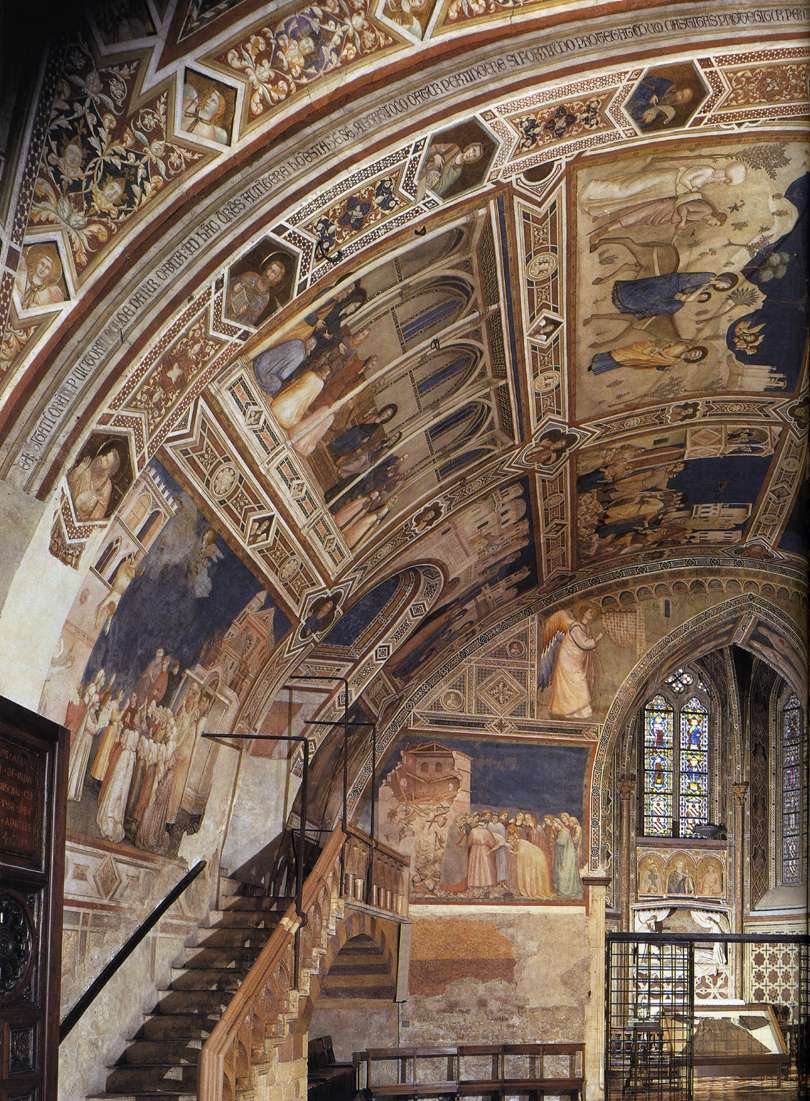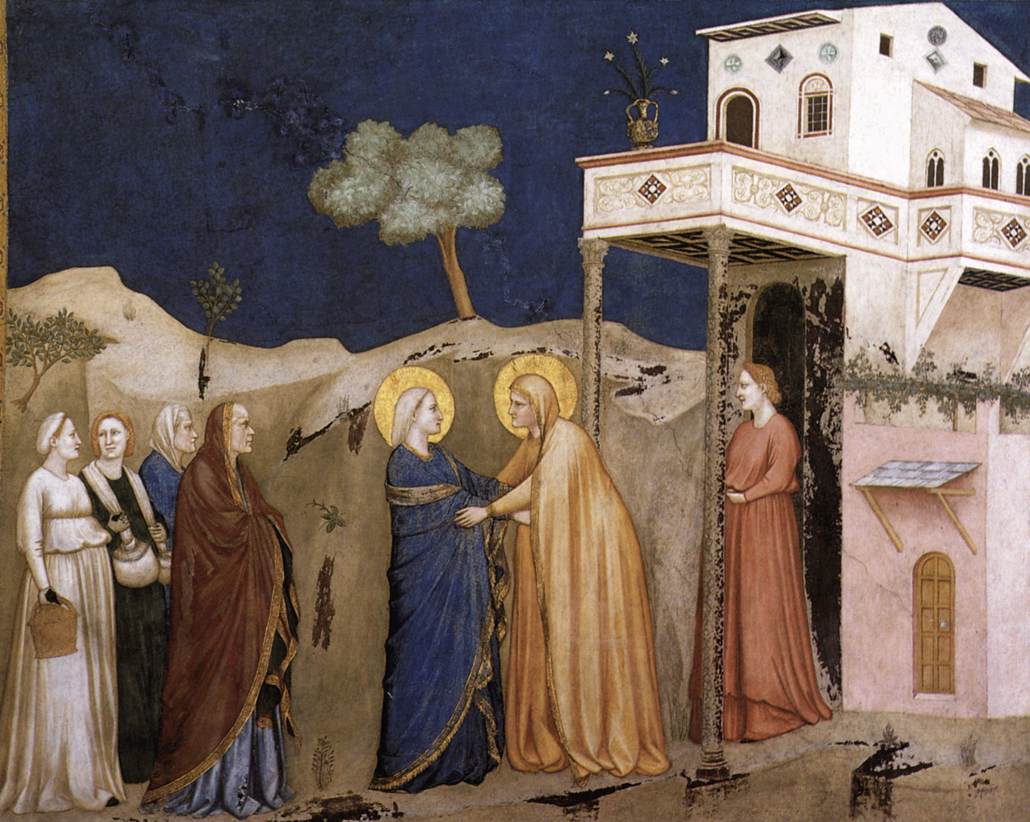Florentine painter and architect. He was already recognized by Dante as the leading artist of his day. His significance to the Renaissance can be gauged from the fact that not only the leaders in the early 15th-century transformation of the arts, such as Masaccio, but the key figures of the High Renaissance, such as Raphael and Michelangelo - one of whose early studies of Giotto's frescoes in the Peruzzi Chapel, Santa Croce, has survived - were still learning from him and partly founding their style on his example. The reasons for this are twofold. Firstly, his art is notable for its clear, grave, simple solutions to the basic problems of the representation of space and of the volume, structure, and solidity of 3-dimensional forms, and above all of the human figure. Secondly, he was a genius at getting to the heart of whatever episode from sacred history he was representing, at cutting it down to its essential, dramatic core, and at finding the compositional means to express its innermost spiritual meaning and its psychological effects in terms of simple areas of paint. His solutions to many of the problems of dramatic narrative were fundamental. They have subsequently been elaborated on in many ways, but they have never been surpassed.
Part of the secret of Giotto's success in the representation of the fundamentals of human form and human spiritual and psychological reaction to events was his close attention to, and deep understanding of, the achievements of the sculptors Nicola Pisano, Arnolfo di Cambio and, above all, Giovanni Pisano, who were tackling the same basic representational problems in a naturally 3-dimensional medium. The essential unity of the arts in Giotto's day is even more dramatically illustrated by the fact that in the last years of his life he was assigned the major architectural commission in Florence, namely the building of the Campanile ('Giotto's Tower') of the cathedral (1344). The fact that it would almost certainly have fallen down if his successor, Andrea Pisano, had not immediately doubled the thickness of the walls is, in its way, no less informative of the nature of late medieval attitudes and of the triumphs and disasters that attended them.
There can be no doubt whatsoever about Giotto's artistic stature and historical importance. Indeed, he so dominated the Florentine Trecento through his collaborators and followers, from Taddeo Gaddi onwards, that there was until relatively recently a thoroughly misleading tendency to lump together almost every artist in sight under the somewhat derogatory title of 'Giotteschi'. On the other hand, almost everything else about Giotto's career is problematic. His cut down mosaic of the Navicella (c. 1300) in Rome, which was for his contemporaries by far his most important work, is now a ghostly echo of its former self. His signed altarpieces, the Stigmatization of St Francis (Paris, Louvre), the Baroncelli Altarpiece (Florence, Santa Croce) and the polyptych of the Madonna and Saints (Bologna, Pinacoteca Nazionale), seem to be very largely shop work protected by his signature. However, the Ognissanti Madonna (Florence, Uffizi) is universally accepted as his although it is neither signed nor documented. Other works with a good claim to be considered as his include the Dormition of the Virgin (Berlin) and a Crucifix in Santa Maria Novella, Florence.
The frescoes in the Arena Chapel, Padua (c. 1304-13), depict scenes from the lives of St Joachim and St Anne and the Virgin, and from the Life and Passion of Christ. These frescoes, the masterpiece on which the whole modern concept of his style is based, are unsigned and undocumented, as are those in the Bardi and Peruzzi Chapels (Life of St Francis and Lives of Sts John Baptist and Evangelist) in Santa Croce, which are generally accepted as the only reasonable foundation for an idea of his stylistic evolution during his maturity.
All this, however, is as nothing to the endless controversy which surrounds his date of birth and the attribution to him of the frescoes of the Life of St Francis, painted, probably in the mid-1290s, on the lower walls of the Upper Church of San Francesco at Assisi. For virtually all Italian scholars they constitute the early work of Giotto. For the majority of non-Italian specialists on the subject they do not, and a daunting proportion of the almost 2000 major items in the ever more rapidly accumulating Giotto bibliography is largely devoted to fanning the flames. Fortunately, perhaps, for the sanity of the earnest and discriminating inquirer only a handful of these outpourings can be said to clarify the issue in any substantial way. What should at least be obvious by now is that the frescoes at Assisi are, in detail and as an entire, coherent, carefully planned scheme, like the Arena Chapel frescoes, amongst the seminal achievements in the history of Italian late medieval painting. They stand at the dawning of a new age and their appeal as works of art is not one whit diminished if, as may well be the case, they are not in fact by Giotto.
//
![]()









